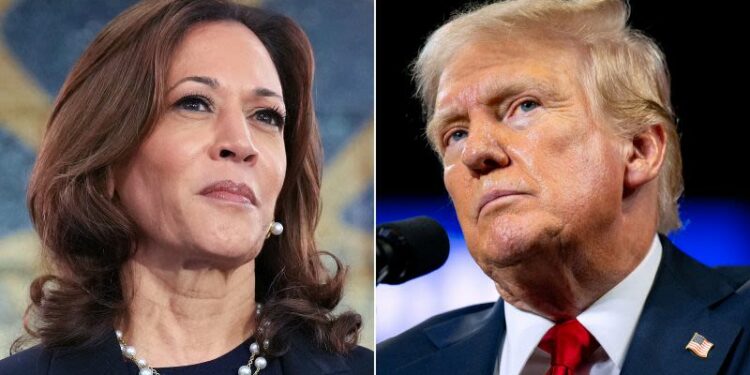US Manufacturing Industry Struggles despite Economic Investments
President Joe Biden has emphasized the growth of the manufacturing industry in America, but this lucrative sector is currently facing numerous challenges, even after recovering from the impacts of Covid-19. Under his administration, substantial investments have been made to boost the industry; however, this flourishing momentum hasn’t been sustained. Despite multi-billion dollar investments from legislation such as CHIPS and Science Act and infrastructure spending packages by Congress, manufacturing employment levels are still far below pre-pandemic figures.
The industry’s main pain points remain sluggish demand and elevated interest rates. Additionally, expansion plans by both Vice President Kamala Harris and former President Donald Trump propose initiatives aimed at enhancing economic vitality. From tax deductions to regulations reforming proposals – it’s clear that job creation and sustenance is a primary focus for any potential leader.
How do the regulatory environments differ between America and other countries when it comes to manufacturing?
The Challenges and Opportunities in Bringing Manufacturing Back to America: Harris and Trump’s Plans
In recent years, there has been a growing push to bring manufacturing back to America. This movement has been driven by a desire to stimulate the economy, create jobs, and reduce reliance on overseas production. Both Vice President Kamala Harris and former President Donald Trump have proposed plans to address the challenges and opportunities associated with this endeavor. Let’s take a closer look at their respective plans and what they mean for the future of manufacturing in America.
Challenges of Bringing Manufacturing Back to America
Bringing manufacturing back to America poses several challenges that need to be addressed in order to be successful. Some of these challenges include:
- Cost – Overseas production can often be cheaper due to lower labor costs and less stringent regulations. Bringing manufacturing back to America may lead to higher production costs, which could impact the pricing of goods.
- Infrastructure – Many American manufacturing facilities have become outdated and would require significant investment in order to modernize them.
- Skilled Labor – There is a shortage of skilled manufacturing workers in America, and this could pose a challenge in ramping up production.
- Regulatory Environment – America’s regulatory environment can be more stringent than that of other countries, resulting in increased compliance costs.
Opportunities of Bringing Manufacturing Back to America
Despite these challenges, there are also several opportunities associated with bringing manufacturing back to America:
- Job Creation – Bringing manufacturing back to America would create a significant number of new jobs, stimulating the local economy.
- Quality Control – Producing goods domestically allows for greater oversight and control over quality, which could lead to better products.
- Innovation – Keeping manufacturing in America can foster innovation, as companies are closer to research and development centers and can more easily collaborate with universities and technology hubs.
- Resilience – Keeping manufacturing onshore can make the economy more resilient against external shocks and disruptions.
Harris’s Plan for Bringing Manufacturing Back to America
Vice President Kamala Harris has proposed a plan that focuses on investing in infrastructure, workforce development, and advanced manufacturing technologies. Some key points of her plan include:
- Infrastructure Investment: Harris’s plan includes a significant investment in modernizing America’s manufacturing infrastructure, such as updating production facilities and expanding transportation networks.
- Workforce Development: Harris’s plan also emphasizes the need to train and upskill American workers to meet the demands of modern manufacturing.
- Advanced Manufacturing Technologies: Harris’s plan advocates for the adoption of advanced manufacturing technologies, such as automation and 3D printing, to increase efficiency and reduce costs.
Trump’s Plan for Bringing Manufacturing Back to America
Former President Donald Trump’s plan centered on reducing regulations and taxes, renegotiating trade deals, and implementing tariffs on imported goods. Some key aspects of his plan included:
- Regulatory Reform: Trump’s plan aimed to reduce regulatory burdens on American manufacturers to make it easier for them to operate and compete.
- Tax Cuts: Trump’s plan included tax cuts for businesses to incentivize them to keep production in America.
- Trade Policy: Trump’s plan focused on renegotiating trade deals to make them more favorable to American manufacturers and implementing tariffs on imported goods to make domestic production more competitive.
Benefits and Practical Tips for Bringing Manufacturing Back to America
There are several potential benefits of bringing manufacturing back to America, including job creation, quality control, and innovation. However, in order for this endeavor to be successful, companies should consider the following practical tips:
- Invest in Advanced Technologies: Embracing advanced manufacturing technologies can help increase efficiency and reduce production costs.
- Collaborate with Government: Engaging with government initiatives, such as workforce development programs and funding opportunities, can help businesses navigate the challenges associated with bringing manufacturing back to America.
- Focus on Quality and Innovation: Emphasizing quality control and innovation can help American manufacturers differentiate themselves from overseas competitors.
the challenges and opportunities associated with bringing manufacturing back to America are substantial. Both Vice President Kamala Harris and former President Donald Trump have proposed plans to address these issues, and their respective approaches emphasize different strategies. By investing in infrastructure, workforce development, and advanced manufacturing technologies, America can position itself as a competitive and innovative manufacturing hub once again. However, it will require a collaborative effort between government, businesses, and stakeholders to overcome the challenges and make the most of the opportunities presented.
Manufacturers in the US are grappling with issues due to tough competition from foreign automakers like BYD posing a threat to American vehicles on a global scale alongside cheaper labor costs abroad that continue to attract manufacturers away from home turf. Offering some respite are Federal Reserve’s actions of reducing interest rates for businesses which could significantly ease borrowing costs along with helping maintain consumer demand stability.
However, uncertainty lingers over how much relief these measures will bring given many companies’ apprehensions about future demands and expenses at least into election season this year itself – raising doubts about their effectiveness in stabilizing or boosting production further down the line.
while there have been noteworthy recovery efforts within manufacturing after suffering setbacks during post-pandemic peaks – it may be some time before these grand-scale investments yield tangible results.











